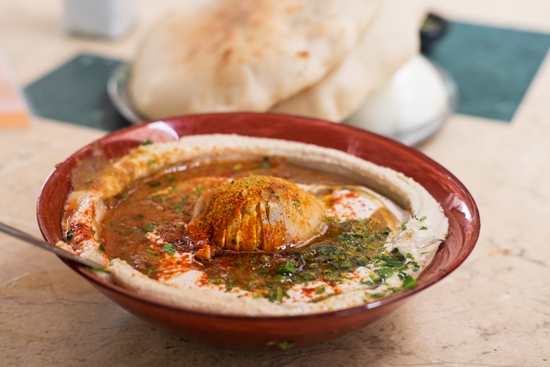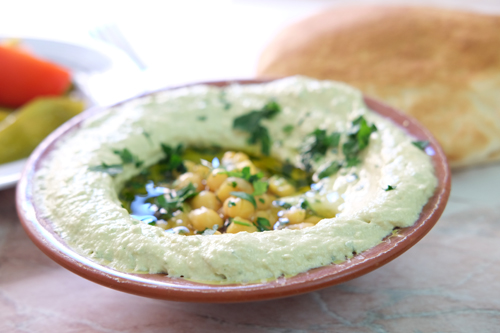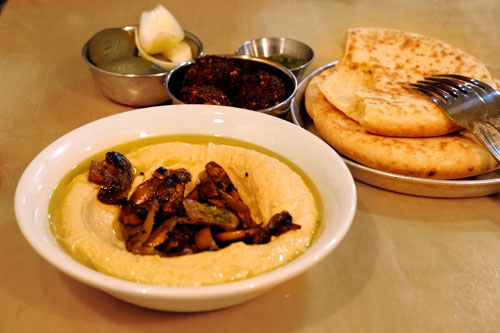5 Things Israel Can Teach Us About Hummus

All photos by Naomi Tomky.
Hummus—which hails from all over the Middle East—is a way of life in Israel. A survey recently found that 93% of Israelis eat hummus each week, and some eat it more than six times a week. Unsurprisingly, this means they’ve mastered the art of making and eating it. Sitting down to a bowl of warm, freshly mashed hummus in Israel is nothing at all like the soggy bowls of supermarket paste you find in the U.S. But there’s hope: Here’s how you can aim for a better hummus experience, no matter where you are.
1. Make it fresh. In Israel, the hummus is sometimes still warm from cooking the chickpeas, which gives it a fresh, comforting aspect that no plastic tub comes close to offering. But even if you aren’t using dried beans, fresh-made hummus with a can of chickpeas is still a hundred times better than store-bought.
2. Use the best ingredients. The chickpeas in Israel are so high-quality, you can bite into them like a peanut. While you’re unlikely to find that in the U.S., you can at least seek out a premium brand of chickpeas and tahini. (We like a chickpea brand called Duru, and Soom Tahini, which uses single-sourced Ethiopian White Humera sesame seeds.)
3. Add toppings, not add-ins. Instead of blending in red peppers or olives, flavor the hummus by adding toppings: grilled vegetables (such as mushrooms), pine nuts sautéed in butter, or a hard-boiled egg.
4. Make it look good. Every bowl of hummus in Israel is not just tasty, but also beautiful. As the saying goes, you eat with your eyes first, and it sure becomes meaningful when comparing a drab bowl of brown to the colorful masterpieces in Israel. A few tips: Smooth the top with a spoon, then drop on a few loose chickpeas; be generous with glugs of olive oil on top; and use sumac, paprika, or za’atar to add color.
5. Don’t fill up on bread. In the States, hummus is often just a vehicle for crackers or pita bread, but in Israel, the hummus is the star of the show, so it’s always served with pieces of raw onion. Instead of just bread, Israelis use the onion for dipping: good for the figure, bad for the breath. The crisp, sharp bite works surprisingly well with the creamy dip.
About the author: Naomi Tomky uses her unrelenting enthusiasm as an eater, photographer, and writer to propel herself around the world. From trailing a street food hawker in Singapore to navigating the ancient roads of the Mayan jungle, she explores the world with a hungry eye—and mouth. Follow her on Twitter @gastrognome and on Instagram @the_gastrognome. She also wrote about eating in Tel Aviv for Eat Your World.
Last update: Jan. 25, 2024




